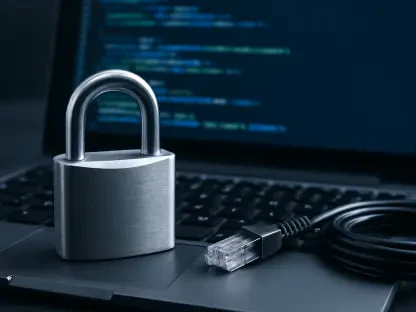In an increasingly digitized world, the importance of safeguarding sensitive information has never been greater. Nowhere is this more critical than in the realm of healthcare, where patient data security is paramount. As healthcare organizations transition to electronic health records (EHRs) and telemedicine, the need for robust authentication methods to protect patient information becomes glaringly evident. In response to this pressing need, biometric authentication has emerged as a transformative technology.
Biometric Authentication
Biometric authentication is a method of verifying an individual’s identity through unique biological or behavioral characteristics, such as fingerprints, facial features, iris patterns, or voice recognition. Unlike traditional username-password combinations or PINs, biometrics provide a level of security that is nearly impossible to replicate or compromise. This technology has found its place not only in unlocking smartphones, but also in ensuring the integrity of healthcare data.
Relevance in Healthcare
The application of biometric authentication in healthcare is a logical response to the growing threats faced by healthcare organizations. Patient records, containing a wealth of personal, financial, and medical information, have become prime targets for cybercriminals. The consequences of a data breach in healthcare are far-reaching, affecting not only individual patients, but also eroding trust in the healthcare system as a whole.
Significance of Patient Data Security
Patient data security is not merely a legal requirement, but also a moral obligation for healthcare providers. It is about protecting the most intimate and personal aspects of an individual’s life—their health history, treatment plans, and medical conditions. Breaches not only jeopardize the confidentiality of this data, but can also have grave consequences for patient care, leading to misdiagnosis, treatment errors, and identity theft. Moreover, regulatory bodies like HIPAA in the United States, demand strict compliance with data security standards, underscoring the financial and legal ramifications of inadequate safeguards.
Biometric authentication has emerged as a potent tool to safeguard patient data and improve access control within most healthcare settings. This section delves into various biometric technologies and their wide-ranging applications in the healthcare sector, shedding light on how they bolster access control and authentication.
Biometric Technologies in Healthcare
This section explores various biometric technologies and their applications in healthcare, shedding light on how they enhance access control and authentication within healthcare settings.
Fingerprint Recognition
Fingerprint recognition is undeniably one of the most prevalent and trusted biometric technologies in healthcare. Its applications extend to secure access to electronic health records (EHRs), medication dispensing systems, and controlled areas within healthcare facilities. The core advantage of fingerprint recognition lies in its exceptional accuracy, ensuring that only authorized personnel can gain access to sensitive information or restricted zones. By eliminating the need for password-based authentication, which can be prone to human error or unauthorized sharing, it significantly enhances the security posture of healthcare organizations.
Facial Recognition
Facial recognition technology is rapidly gaining traction within the healthcare industry. Its applications span identity verification at multiple touchpoints, including patient check-ins, medication administration, and monitoring the movement of patients within a healthcare facility. The inherent convenience of facial recognition, combined with its non-intrusiveness, makes it a favored choice for both patients and staff. Its non-invasive nature enhances security while concurrently improving the patient experience by minimizing administrative bottlenecks.
Palm Vein Scanning
Palm vein scanning is a cutting-edge biometric technology used for patient identification, particularly during the registration process and at the point-of-care. This innovative technology captures the unique vein pattern beneath the skin’s surface for precise identification. Its contribution to enhanced authentication is notable, providing a remarkable degree of accuracy. Moreover, palm vein scanning is particularly advantageous in healthcare settings where hygiene is a paramount concern. Unlike fingerprint scanning, it does not require physical contact, thus ensuring a higher level of cleanliness and security.
Voice Recognition
Voice recognition technology is prominently employed in healthcare, particularly for securing phone and telemedicine consultations. It plays a vital role in verifying the identity of both patients and healthcare professionals during remote interactions. Voice recognition stands out due to its ability to analyze unique vocal characteristics, making it exceptionally challenging to impersonate. In addition to enhancing security, it adds an extra layer of assurance to telehealth services while preserving the convenience of remote access.
Iris Recognition
Iris recognition technology is reserved for high-security healthcare environments, such as pharmaceutical labs and research facilities, where access control to restricted areas is of paramount importance. Its superiority lies in the unique and stable patterns of the iris, which are incredibly difficult to duplicate. Iris recognition offers a stringent level of security, ensuring that only authorized personnel gain access to critical zones within healthcare facilities.
Benefits of Biometric Authentication in Healthcare
Biometric authentication brings a multitude of advantages to the healthcare sector, particularly in safeguarding patient data and mitigating the risks associated with unauthorized access and identity theft. In this section, we will explore the significant benefits of using biometrics in healthcare.
- Uniqueness and Accuracy:
Biometrics rely on unique physical or behavioral traits, such as fingerprints, irises, or voices, which are extremely difficult to replicate or forge. This inherent uniqueness ensures a high level of accuracy in identity verification. Consequently, healthcare organizations can have confidence that the right individuals are accessing patient data while minimizing the risk of errors and unauthorized access.
- Enhanced Security:
Biometric authentication significantly enhances the security of patient data. Unlike traditional username-password combinations, which can be vulnerable to phishing attacks, password theft, or sharing, biometrics provide a formidable barrier against unauthorized access. This level of security is vital in preventing data breaches and maintaining patient confidentiality.
- Reduction in Identity Theft:
Identity theft is a growing concern, especially in healthcare, where personal and financial data are closely intertwined with medical records. Biometric authentication acts as a potent deterrent against identity theft because it is virtually impossible for an unauthorized individual to mimic or steal an individual’s biometric traits. This reduces the risk of fraudulent activity, such as accessing medical services under someone else’s name.
- Streamlined Workflow:
Biometric authentication streamlines workflow processes in healthcare. Patients can quickly and securely check in at healthcare facilities, access their records, and authorize treatments without the need for extensive paperwork or manual identity verification. This efficiency not only saves time, but also improves the overall patient experience.
- Reducing Human Error:
Passwords and PINs can be forgotten, mistyped, or shared unintentionally, leading to authentication failures or breaches. Biometric authentication eliminates the potential for human error in this regard. Patients and healthcare professionals can access systems and records effortlessly, reducing the risk of security lapses due to user mistakes.
Privacy and Ethical Considerations
Biometric authentication in healthcare, while offering significant benefits, also raises important ethical and privacy concerns. This section delves into these considerations and discusses how healthcare organizations navigate compliance with regulations like HIPAA and GDPR.
- Informed Consent: Collecting biometric data requires informed consent from patients or individuals. Healthcare providers must ensure that individuals understand the nature of the data being collected, how it will be used, and its associated privacy implications. Patients should have the option to opt-in or opt-out of biometric authentication.
- Data Security and Encryption: Biometric data is highly sensitive and must be stored and transmitted securely. Healthcare organizations need robust encryption protocols to protect this data from unauthorized access. Any breach could lead to severe consequences, both legally and ethically.
- Data Ownership: Defining the ownership of biometric data is a complex ethical issue. Patients should have control over their own biometric information, and healthcare organizations must respect patients’ rights regarding their data.
- Biometric Data Retention: Healthcare providers should establish clear policies regarding the retention of biometric data. Retaining data longer than necessary raises privacy concerns. Transparent data retention policies can address these concerns and align with regulatory requirements.
- GDPR Compliance: In Europe, the General Data Protection Regulation (GDPR) sets strict standards for collecting and processing personal data, including biometric information. Healthcare organizations operating within the European Union must adhere to GDPR requirements, which include obtaining explicit consent for data collection and providing individuals with data access and deletion rights.
- Data Minimization: Both HIPAA and GDPR emphasize the principle of data minimization, which means collecting only the necessary data for a specific purpose. Healthcare organizations should apply this principle to biometric data collection to reduce privacy risks.
- Data Breach Response: Healthcare organizations must have robust data breach response plans in place. In the event of a breach involving biometric data, they should promptly notify affected individuals and relevant regulatory authorities, as required by law.
Challenges and Vulnerabilities
Despite their plentiful benefits, biometric authentication systems in healthcare are not without challenges and vulnerabilities. In this section, we will delve into some of the potential issues that healthcare organizations may face when implementing biometric authentication systems, and explore the complexities of false positives, false negatives, and system reliability.
False Positives and False Negatives:
One of the foremost challenges in biometric authentication is the occurrence of false positives and false negatives. False positives happen when the system incorrectly accepts an unauthorized user as legitimate, granting access to sensitive data. Conversely, false negatives occur when the system denies access to an authorized user.
In healthcare, the consequences of false positives or negatives can be significant. A false positive could potentially allow unauthorized personnel to access patient records, compromising privacy and security. Conversely, false negatives may lead to delays in patient care, as healthcare providers are denied access to critical information.
Biometric Data Variability:
Biometric traits can exhibit variability due to factors such as aging, illness, or injury. For example, a patient’s fingerprint might change over time, making it more challenging for the system to accurately verify their identity. Healthcare organizations must account for the potential variability of biometric data and implement systems that can adapt to changes while maintaining accuracy.
Vulnerability to Spoofing:
Biometric systems are susceptible to spoofing attacks, where malicious actors attempt to deceive the system by presenting artificial or stolen biometric data. For instance, a fingerprint image could be lifted and used to gain unauthorized access. Healthcare organizations must employ anti-spoofing measures, such as liveness detection, to mitigate this vulnerability.
Hygiene and Environmental Factors:
Environmental conditions and personal hygiene can impact the accuracy of biometric systems. For instance, a dusty or wet environment may affect fingerprint recognition systems. Likewise, facial recognition may be hindered if an individual undergoes significant facial changes, such as wearing a surgical mask or growing a beard. Healthcare facilities often have specific environmental challenges that biometric systems need to accommodate and navigate, such as the need for frequent handwashing.
Final Thoughts
The adoption of biometric authentication in healthcare represents a pivotal advancement in the quest to safeguard patient data and enhance access control within healthcare organizations. Throughout this article, we have explored various facets of biometric authentication in healthcare, highlighting its profound significance and numerous advantages.
Biometric authentication stands as a beacon of hope in an era where digitization is transforming the healthcare landscape. Its uniqueness and accuracy provide a formidable barrier against unauthorized access, mitigating the risks associated with identity theft and data breaches. Patients and healthcare professionals alike benefit from the streamlined workflows and enhanced security it offers.









